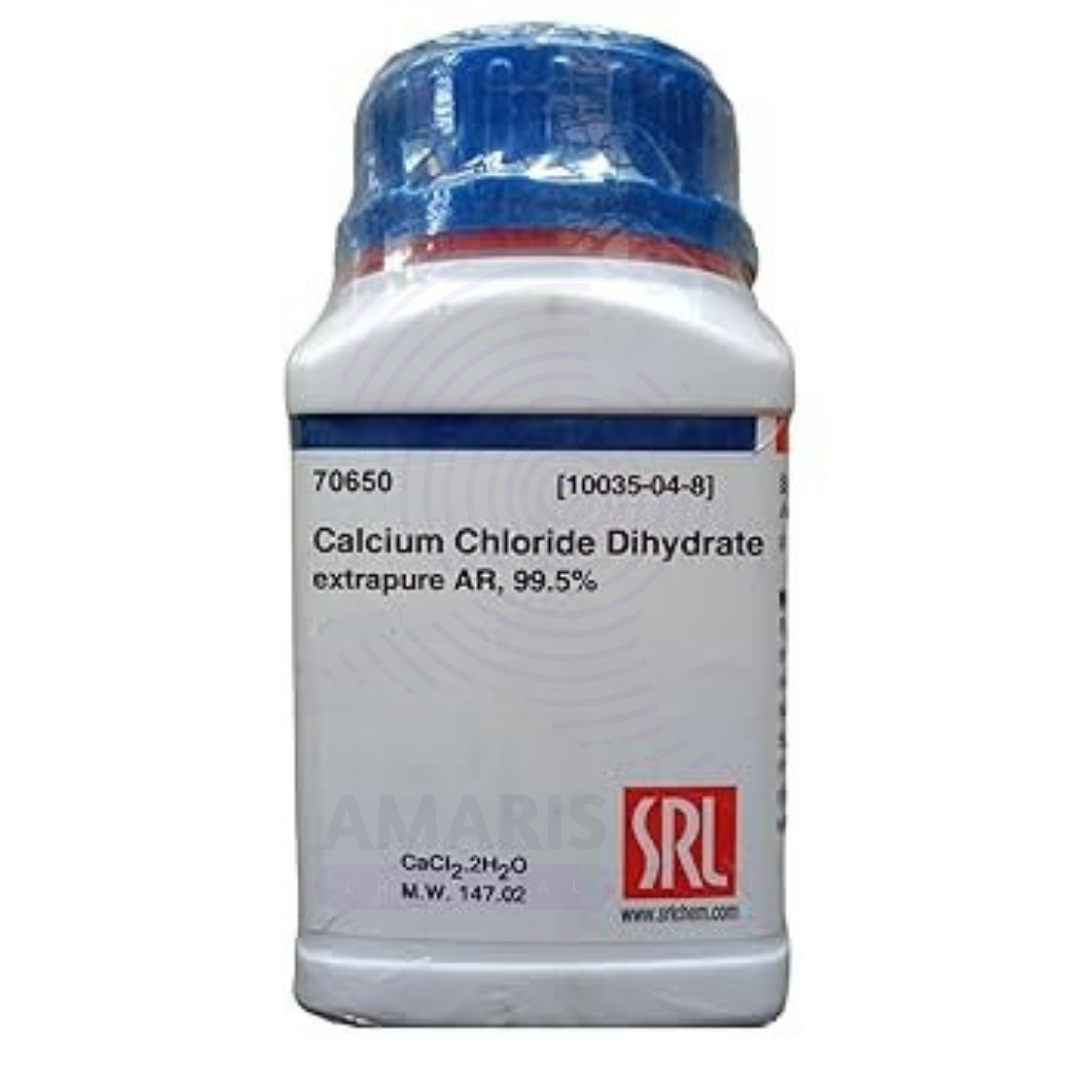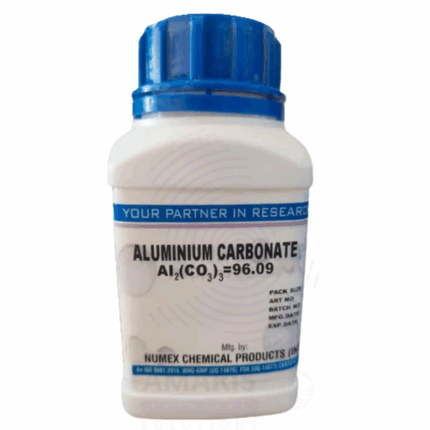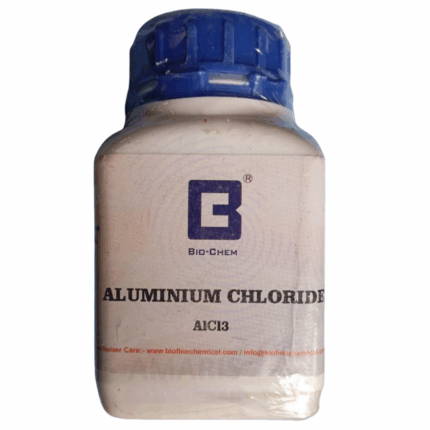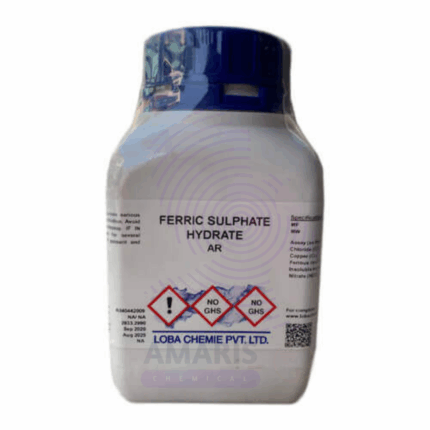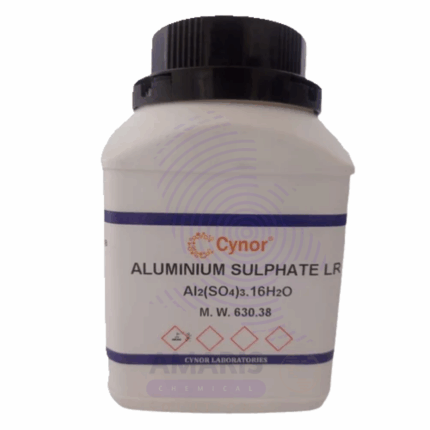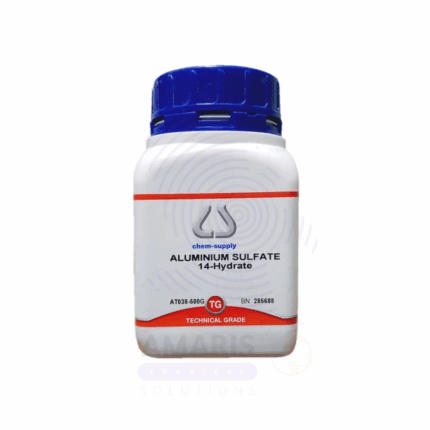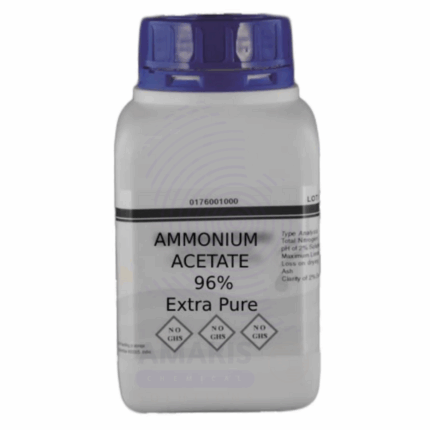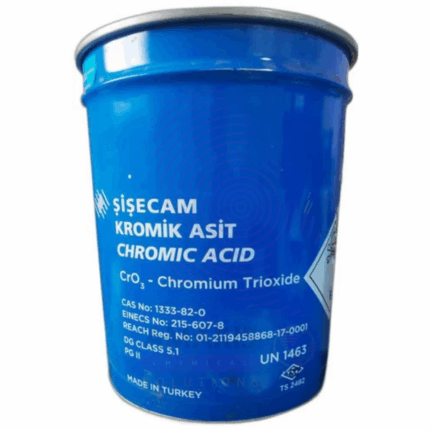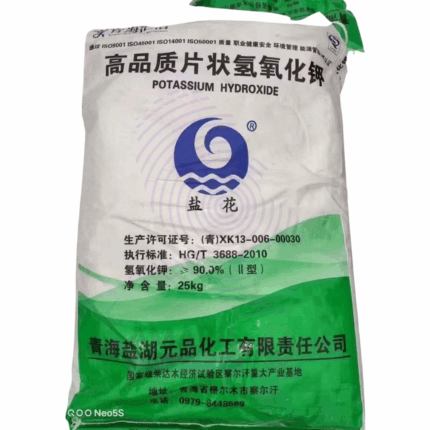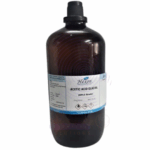
Acetic Acid Extra Pure
$ 28.00 Original price was: $ 28.00.$ 27.13Current price is: $ 27.13.
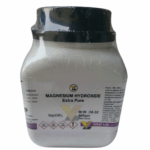
Magnesium Hydroxide Heavy Extra Pure
$ 16.88 Original price was: $ 16.88.$ 16.76Current price is: $ 16.76.
Calcium Chloride Dihydrate Extra Pure
$ 18.00 Original price was: $ 18.00.$ 17.82Current price is: $ 17.82.
Whatsapp Order
Calcium Chloride Dihydrate Extra Pure is a high-purity, white crystalline compound with the chemical formula CaCl₂·2H₂O. It is highly soluble in water and hygroscopic, making it effective as a drying agent, desiccant, and moisture absorber. This extra pure grade is suitable for laboratory use, analytical applications, and precise chemical processes where high-quality reagents are essential. It is also used in buffer solutions, preparation of calcium salts, and various industrial and environmental applications requiring controlled calcium ion concentrations.
Description
Table of Contents
Toggle
Calcium Chloride Dihydrate Extra Pure
Primary Uses
- Drying Agent / Desiccant
- Used to absorb moisture from gases or organic solvents in drying tubes, desiccators, and sample preservation.
- Preferred in cases where mild hygroscopic action is required without strong exothermic reactions.
- Source of Calcium Ions in Reactions
- Provides Ca²⁺ ions in qualitative and quantitative chemical analysis, often in double displacement reactions, flame tests, or ionic precipitation studies.
- Electrolyte in Laboratory-Scale Experiments
- Utilized in electrochemical cells or conductivity studies where calcium ions are needed.
- Osmotic Agent in Molecular Biology
- Sometimes used in bacterial transformation protocols to increase cell membrane permeability in CaCl₂-competent cell preparation.
Secondary Uses
- Freezing Point Depression Studies
- Used in colligative property experiments to demonstrate depression of freezing point and understand solute effects in solutions.
- Heat Generation Demonstrations
- Dissolution in water is exothermic, useful for energy change (enthalpy) experiments or to demonstrate solvation heat release.
- Precipitation Reactions in Teaching Labs
- Reacted with sodium carbonate or oxalate to form precipitates (e.g., CaCO₃ or CaC₂O₄), common in qualitative analysis training.
Additional information
| PACK SIZE |
500 grams Plastic Tin |
|---|
KEY PRODUCT FEATURES
1. Basic Identification Attributes
- Chemical Name: Calcium Chloride Dihydrate
- Chemical Formula: CaCl₂·2H₂O
- CAS Number: 10035-04-8
- HS Code: 2827.20.00
- Grade: Extra Pure (Laboratory Grade)
- Synonyms: Calcium dichloride dihydrate, CaCl₂·2H₂O
2. Physical & Chemical Properties
- Appearance: White, crystalline solid or granules
- Odor: Odorless
- Molar Mass: 147.01 g/mol
- Melting Point: 176 °C (decomposes upon further heating)
- Solubility:
- Highly soluble in water
- Soluble in ethanol and methanol
- Density: ~1.85 g/cm³
- Hygroscopic: Yes – absorbs moisture from air rapidly
- Stability: Stable under recommended conditions
3. Safety & Hazard Attributes
- GHS Classification: Eye Irritation (Category 2A)
- Hazard Statements:
- H319: Causes serious eye irritation
- Precautionary Statements:
- Wear protective gloves/eye protection
- Wash hands thoroughly after handling
- NFPA Ratings:
- Health: 1
- Flammability: 0
- Reactivity: 0
4. Storage & Handling Attributes
- Storage Conditions:
- Keep container tightly sealed
- Store in a cool, dry, well-ventilated place
- Use desiccators if long-term dryness is critical
- Packaging: HDPE containers, moisture-proof plastic bottles
- Handling Precautions:
- Avoid contact with eyes and prolonged skin exposure
- Use PPE in lab-scale handling
5. Regulatory & Compliance Attributes
- Transport Classification (UN): Not regulated
- Disposal:
- Dispose as non-hazardous inorganic waste
- Follow local environmental disposal guidelines
6. Environmental & Health Impact
- Toxicity:
- Low toxicity at lab-scale exposure levels
- May irritate skin and eyes in concentrated form
- Ecotoxicity:
- Can raise salinity in aquatic systems if released in large quantities
- Biodegradability: Not applicable – inorganic salt
SAFETY HANDLING PRECAUTIONS
SAFETY PRECAUTIONS
- Personal Protective Equipment (PPE):
- Wear safety goggles, gloves, lab coat, and dust mask if powder is handled.
- Handling:
- Avoid contact with skin, eyes, and clothing.
- Handle with care as it is hygroscopic (absorbs moisture).
- Do not breathe dust.
- Storage:
- Store in a tightly sealed container.
- Keep in a cool, dry, well-ventilated area away from incompatible materials like strong acids.
- Incompatibilities:
- Strong acids, borates, and silver salts.
FIRST AID MEASURES
- Inhalation:
- Move to fresh air.
- Seek medical attention if irritation persists.
- Skin Contact:
- Wash thoroughly with water and soap.
- Remove contaminated clothing.
- Eye Contact:
- Flush with plenty of water for at least 15 minutes.
- Seek medical help if irritation continues.
- Ingestion:
- Rinse mouth.
- Give water to dilute.
- Do not induce vomiting. Seek medical advice.
FIRE FIGHTING MEASURES
- Flammability:
- Not flammable.
- Extinguishing Media:
- Use suitable media for surrounding fire (e.g., water spray, dry chemical, foam).
- Hazardous Decomposition Products:
- May emit chloride fumes or calcium oxide at high temperatures.
- Firefighting Instructions:
- Wear protective equipment and SCBA in case of heavy smoke.
Related products
Aluminium Carbonate Extra Pure
Aluminium Carbonate Extra Pure is a high-purity, white, odorless powder primarily used as a reagent in laboratory settings for analytical and research applications. Though not commonly stable under standard conditions, it is valued in controlled experimental procedures involving the study of aluminum compounds, buffer systems, and inorganic reactions. Its extra pure grade ensures low levels of contaminants, making it suitable for precise qualitative and quantitative analysis. Due to its sensitivity to moisture and tendency to decompose into aluminum hydroxide and carbon dioxide, it must be handled with care and stored in airtight containers under dry conditions to maintain chemical integrity during laboratory use.
Aluminium Chloride Anhydrous Extra Pure
Aluminium Chloride Anhydrous Extra Pure is a high-purity, white to yellowish crystalline compound that is highly hygroscopic and fuming in moist air. It is extensively used in laboratory chemistry as a powerful Lewis acid catalyst, particularly in Friedel-Crafts alkylation and acylation reactions, as well as in the synthesis of organometallic compounds. Its anhydrous form ensures optimal reactivity and effectiveness in moisture-sensitive processes, including polymerization and halogenation studies. Due to its corrosive nature and tendency to react violently with water, it must be handled in a dry, controlled environment using proper safety measures. This extra pure grade is ideal for high-precision analytical and preparative procedures in organic and inorganic chemistry research.
Aluminium Ferric Sulphate Extra Pure
Aluminium Ferric Sulphate Extra Pure is a high-purity, yellowish to light brown crystalline solid composed of aluminum, iron, and sulfate ions, commonly used in laboratory settings for analytical, coordination, and inorganic chemistry research. Its dual-metal composition makes it valuable for studying metal ion interactions, flocculation processes, and as a reagent in qualitative analysis of phosphates and tannins. The compound also finds application in preparing standard solutions and in experiments related to coagulation and sedimentation. Its extra pure grade ensures consistent performance with minimal contamination, making it ideal for precise, controlled experimentation. It should be stored in tightly sealed containers in a dry, cool environment to maintain stability and prevent moisture uptake.
Aluminium Sulphate Anhydrous Extra Pure
Aluminium Sulphate Anhydrous Extra Pure is a high-purity, white crystalline or powdery solid commonly used in laboratory chemistry as a source of aluminum ions for precipitation, titration, and coordination studies. Its anhydrous form provides a concentrated and stable option for applications requiring precise control over water content, such as analytical reagent preparation, pH adjustment, and synthesis of other aluminum salts. This compound is also used in paper sizing experiments, dye fixation, and water treatment research. The extra pure grade ensures very low levels of contaminants, supporting accurate and reproducible results in sensitive experimental work. It should be stored in airtight containers in a dry area to prevent moisture absorption and preserve its chemical integrity.
Aluminium Sulphate Hydrous Extra Pure
Aluminium Sulphate Hydrous Extra Pure is a high-purity, white to slightly off-white crystalline compound containing bound water molecules, commonly used in laboratory settings for analytical, inorganic, and coordination chemistry. It serves as a reliable source of aluminum ions in aqueous solutions and is frequently employed in precipitation reactions, dye fixation studies, and flocculation experiments. The hydrous form offers improved solubility and ease of handling, making it suitable for educational labs and controlled research environments. Its extra pure grade ensures minimal interference from impurities, enabling accurate, reproducible results in sensitive analytical procedures. To maintain its stability and prevent further hydration or contamination, it should be stored in well-sealed containers in a cool, dry place.
Ammonium Acetate Extra Pure
Ammonium Acetate Extra Pure is a high-purity, white crystalline solid that is highly soluble in water and commonly used as a buffer component in laboratory and analytical chemistry. It is especially valuable in high-performance liquid chromatography (HPLC), mass spectrometry, and biochemical assays where pH control and minimal ionic interference are essential. This compound also serves as a reagent in organic synthesis, particularly in the preparation of acetamides and other nitrogen-containing compounds. Its extra pure grade ensures excellent consistency, low contaminant levels, and compatibility with sensitive instrumentation. To maintain stability and prevent moisture absorption, it should be stored in a tightly sealed container in a cool, dry environment.
Chromic Acid
Chromic Acid is a powerful oxidizing agent, typically available as a bright orange-red crystalline solid or concentrated solution containing chromium trioxide (CrO₃) dissolved in sulfuric acid. It is a highly corrosive and strong acid used predominantly in industrial applications such as metal finishing, cleaning, and surface treatment. Chromic acid is valued for its excellent oxidative and cleaning properties, particularly in chromium plating, anodizing, and etching processes. Due to its toxicity and environmental hazards, its handling and disposal are strictly regulated. It plays a crucial role in chemical synthesis, laboratories, and manufacturing.
Potassium Hydroxide
Potassium Hydroxide is a highly concentrated, caustic alkaline chemical available as a solid (pellets, flakes) or concentrated aqueous solution. It is a strong base widely used in industrial processes, chemical manufacturing, and as a reagent. Potassium Hydroxide provides excellent neutralizing, saponifying, and cleaning properties and is essential in producing potassium soaps, biodiesel, fertilizers, and various chemical compounds. Its high purity and concentration (90%) make it suitable for demanding applications requiring strong alkalinity.


 Preservatives(food)
Preservatives(food) Flavor Enhancers
Flavor Enhancers Acidulants
Acidulants Sweeteners
Sweeteners Antioxidants
Antioxidants Colorants(food)
Colorants(food) Nutraceutical Ingredients (food)
Nutraceutical Ingredients (food) Nutrient Supplements
Nutrient Supplements Emulsifiers
Emulsifiers
 Collectors
Collectors Dust Suppressants
Dust Suppressants Explosives and Blasting Agents
Explosives and Blasting Agents Flocculants and Coagulants
Flocculants and Coagulants Frothers
Frothers Leaching Agents
Leaching Agents pH Modifiers
pH Modifiers Precious Metal Extraction Agents
Precious Metal Extraction Agents
 Antioxidants(plastic)
Antioxidants(plastic) Colorants (Pigments, Dyes)
Colorants (Pigments, Dyes) Fillers and Reinforcements
Fillers and Reinforcements Flame Retardants
Flame Retardants Monomers
Monomers Plasticizers
Plasticizers Polymerization Initiators
Polymerization Initiators Stabilizers (UV, Heat)
Stabilizers (UV, Heat)
 Antifoaming Agents
Antifoaming Agents Chelating Agents
Chelating Agents Coagulants and Flocculants
Coagulants and Flocculants Corrosion Inhibitors
Corrosion Inhibitors Disinfectants and Biocides
Disinfectants and Biocides Oxidizing Agents
Oxidizing Agents pH Adjusters
pH Adjusters Scale Inhibitors( water)
Scale Inhibitors( water)
 Antioxidants(cosmetic)
Antioxidants(cosmetic) Emollients
Emollients Fragrances and Essential Oils
Fragrances and Essential Oils Humectants
Humectants Preservatives
Preservatives Surfactants(cosmetic)
Surfactants(cosmetic) Thickeners
Thickeners UV Filters
UV Filters
 Fertilizers
Fertilizers Soil Conditioners
Soil Conditioners Plant Growth Regulators
Plant Growth Regulators Animal Feed Additives
Animal Feed Additives Biostimulants
Biostimulants Pesticides (Herbicides, Insecticides, Fungicides)
Pesticides (Herbicides, Insecticides, Fungicides)
 Active Pharmaceutical Ingredients (APIs)
Active Pharmaceutical Ingredients (APIs) Excipients
Excipients Solvents(pharmaceutical)
Solvents(pharmaceutical) Antibiotics
Antibiotics Antiseptics and Disinfectants
Antiseptics and Disinfectants Vaccine Adjuvants
Vaccine Adjuvants Nutraceutical Ingredients (pharmaceutical)
Nutraceutical Ingredients (pharmaceutical) Analgesics & Antipyretics
Analgesics & Antipyretics
 Analytical Reagents
Analytical Reagents Solvents(lab)
Solvents(lab) Chromatography Chemicals
Chromatography Chemicals Spectroscopy Reagents
Spectroscopy Reagents microbiology-and-cell-culture-reagents
microbiology-and-cell-culture-reagents Molecular Biology Reagents
Molecular Biology Reagents Biochemical Reagents
Biochemical Reagents Inorganic and Organic Standards
Inorganic and Organic Standards Laboratory Safety Chemicals
Laboratory Safety Chemicals Specialty Laboratory Chemicals(Special Laboratory Equipment)
Specialty Laboratory Chemicals(Special Laboratory Equipment)
 Demulsifiers
Demulsifiers Hydraulic Fracturing Fluids
Hydraulic Fracturing Fluids Scale Inhibitors(oil)
Scale Inhibitors(oil) Surfactants(oil)
Surfactants(oil) Drilling Fluids
Drilling Fluids
 Dyes and Pigments
Dyes and Pigments Bleaching Agents
Bleaching Agents Softening Agents
Softening Agents Finishing Agents
Finishing Agents Antistatic Agents
Antistatic Agents
 Admixtures
Admixtures Waterproofing Agents
Waterproofing Agents Sealants and Adhesives
Sealants and Adhesives Curing Compounds
Curing Compounds Concrete Repair Chemicals
Concrete Repair Chemicals Anti-Corrosion Coatings
Anti-Corrosion Coatings
 Surfactants(cleaning)
Surfactants(cleaning) Builders
Builders Enzymes
Enzymes Solvents (Cleaning)
Solvents (Cleaning) Fragrances
Fragrances
 Electronic Chemicals
Electronic Chemicals Catalysts
Catalysts Lubricants
Lubricants Photographic Chemicals
Photographic Chemicals Refrigerants
Refrigerants Automotive chemicals
Automotive chemicals Pyrotechnic Chemicals
Pyrotechnic Chemicals
 Biodegradable Surfactants
Biodegradable Surfactants Bio-based Solvents
Bio-based Solvents Renewable Polymers
Renewable Polymers Carbon Capture Chemicals
Carbon Capture Chemicals Wastewater Treatment Chemicals
Wastewater Treatment Chemicals
 Pigments
Pigments Solvents(paint)
Solvents(paint) Specialty Coatings
Specialty Coatings Binders/Resins
Binders/Resins Additives
Additives Driers
Driers Anti-Corrosion Agents
Anti-Corrosion Agents Functional Coatings
Functional Coatings Application-Specific Coatings
Application-Specific Coatings
 Fresh Herbs
Fresh Herbs Ground Spices
Ground Spices Whole Spices
Whole Spices Spice Blends
Spice Blends Dried Herbs
Dried Herbs
 Leavening Agents
Leavening Agents Dough Conditioners
Dough Conditioners Flour Treatments
Flour Treatments Fat Replacers
Fat Replacers Decoratives
Decoratives Preservatives(baking)
Preservatives(baking)
 Plasticizers & Softeners
Plasticizers & Softeners Reinforcing Agents
Reinforcing Agents Adhesion Promoters
Adhesion Promoters Vulcanizing Agents
Vulcanizing Agents Antidegradants
Antidegradants Blowing Agents
Blowing Agents Fillers & Extenders
Fillers & Extenders Accelerators & Retarders
Accelerators & Retarders